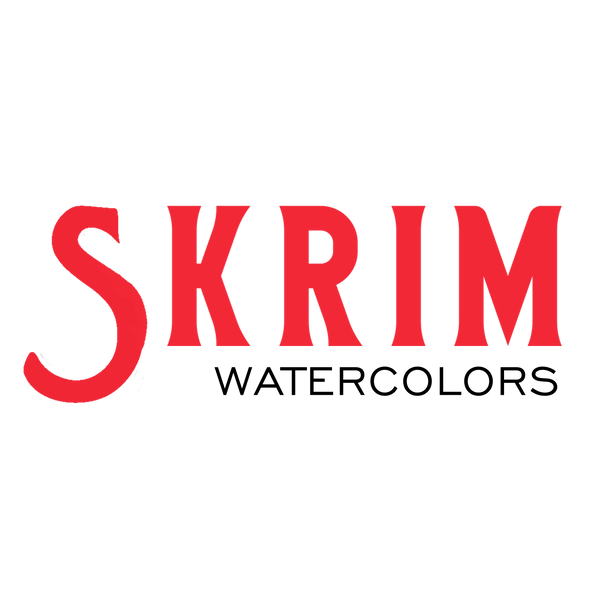The Complete Beginner's Guide to Watercolor: Everything You Need to Start with Skrim Watercolors
Share
The Complete Beginner's Guide to Watercolor: Everything You Need to Start with Skrim Watercolors
Hello there! If you're looking to dive into the beautiful and expressive world of watercolor painting, you're in the right place. Watercolor is a fantastic medium known for its versatility and the ethereal quality of its washes. With Skrim Watercolors, you’ll find the perfect palette to begin your painting journey. This guide will walk you through everything from the essential supplies to the basic techniques that will help you create stunning watercolor artworks.
What You Need to Get Started
Paints: Skrim Watercolors come in a variety of vibrant colors that are perfect for beginners and seasoned artists alike. They’re known for their excellent transparency and blending properties, which are key characteristics of high-quality watercolors.
Brushes: While Skrim focuses on paints, you'll need a good set of brushes. For starters, a round brush (sizes 6 or 8) and a flat brush (1 inch) will serve most of your needs. Round brushes are versatile for detailed and loose styles, while flat brushes are great for washes and bold strokes.
Paper: Watercolor paper is essential because it’s made to absorb water without warping. A cold-pressed 140 lb paper is ideal for beginners due to its forgiving texture, which is suitable for both detailed work and smooth washes.
Palette: You’ll need a palette for mixing colors. Some palettes come with wells where you can squeeze tube paints or lay out pan sets. A white, sturdy ceramic or plastic palette is recommended to see the true colors.
Water Container: Always keep at least two containers of water handy—one for washing your brush to keep colors clean and the other for mixing with paints.
Paper Towels or Sponges: These are useful for blotting brushes and correcting mistakes by lifting wet paint from the paper.
Basic Techniques to Master
Wet on Wet: Apply wet paint onto a wet surface to create soft, flowing gradients. This technique is ideal for backgrounds and creating atmospheric effects in landscapes.
Wet on Dry: Paint on dry paper for more control and sharper edges. This is the technique you will use most often for defined shapes and details.
Glazing: Overlap thin, transparent layers of color to achieve depth and subtlety in your painting. Ensure each layer is dry before applying the next to prevent colors from bleeding into one another.
Dry Brush: Drag a brush with very little water across dry paper to create a rough texture that’s perfect for depicting things like sand, grass, and clouds.
Lifting: Dab a wet brush or a clean, damp sponge into the paint to lift it from the paper. This technique is useful for correcting mistakes or creating highlights.
Mixing Colors: Learn to mix your Skrim Watercolors on the palette for a range of hues. Start with primary colors and experiment with mixing to understand color relationships and create an endless spectrum of shades.
Conclusion
Congratulations on taking your first step into the world of watercolor with Skrim Watercolors! Remember, the key to mastering watercolor is practice and patience. Don’t be afraid to experiment with different techniques, and most importantly, have fun with your paints. Every brushstroke is a learning opportunity and a chance to express your creativity.
Ready to embark on your watercolor journey? Visit Skrim Watercolors to discover our range of premium watercolors and start transforming your creative ideas into vibrant artworks today!

2 comments
I paint on silk and wool scarfs. Will this stay on when washed?
can you use on fabrics?